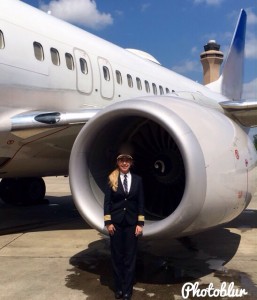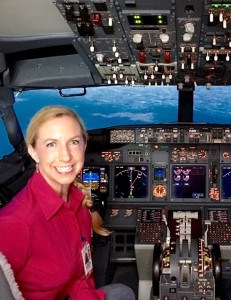Hello everyone!
It seems that pilot training remains a mystery to many! Who are we? What are we doing up there in the cockpit? How is it that we came to be in those positions? I will write many more articles about pilots and how we come up through the ranks but this one is specifically about what we do once we are in our airline pilot positions.
As newly hired pilots at the majors, we all start at the bottom no matter what our previous flying experience and backgrounds have been. Much of our position opportunities are based upon when we were hired, what fleet of jets the airlines choose to operate, and where the pilot bases are located. More on that in a future article called “Pilot Positions”.
+ We take a required course called Basic Indoctrination when we first begin with the airline or if we have been away from flying the line for a long period of time and are returning. This course usually lasts two weeks and includes daily, in class instruction. We review and study regulations, rules, policies, procedures, operations, expectations, weather, and other non aircraft specific topics.
+ When we upgrade from First Officer (co-pilot) to Captain, some airlines provide a Captain school for 3-5 days of classroom instruction on leadership, mentoring, management, scenarios, and other non aircraft specific topics that pertain to these positions.
+ We then attend a 4-5 week training course specifically pertaining to the aircraft and position that we will be working. This is all done at the airline training centers away from home and sometimes include training in contracted simulators in other locations. This training is divided into four sections.
1) Systems training – It comes in various formats which include classroom, computer, book, computer lab, etc. No matter in what style it is delivered, we study (and usually pre-study before we arrive) every detail about the jet we will be flying. Yes, we do need to know what every switch does, what every light means, and how all of the systems work on the aircraft both normally and abnormally. Sometimes, we will also sit in a non motion simulator to manipulate all of these items in order to better understand how they work. We work in a practice mockup of the cabin for several hours as well to use the safety and emergency equipment on board. This section is complete with a comprehensive system test or oral exam.
2) Non motion simulator – We then proceed to the next section where we go through our procedures and checklists. A typical day in this section includes a few hours of pre briefing with an instructor pilot, followed by a four hour sim session, and then we finish with a post brief. (Afterwards, we study several hours back at the hotel for our lesson the next day). We learn to test all of the components of the jet to ensure everything will work properly for our flight. We memorize patterns that we call “flows” to cover all of the various switches and set ups for preflight, en route and post flight. We practice “programming the box” which means that we will set in the parameters that we want to fly such as the power setting for takeoff, takeoff speeds, aircraft weights, center of gravities, trims, runways, route, flight path vertically and laterally, altitudes, speeds, forecast winds, descent procedure, arrival and approach, runway, landing performance, landing speeds and criteria. We also see what things will look like if the systems malfunction or things change for our planned flight. We “fly” these non motion simulators as if we are doing a flight from point A to point B. This section lasts one to two weeks and is complete when we pass a check ride that demonstrates we have mastered all the areas above.
3) Full motion simulator – These are very expensive, full feeling simulators that are just like flying the jet (and can even be a little tougher!). In this section, we do all of the actual flying such as different types of takeoffs and landings in various weather conditions and configurations of the jet but we also add in all of the emergencies such as engine failures, fires, partial and complete system failures, wind shears, terrain, stalls, etc. We work together as a crew and practice using standard operating procedures and various resources to make the best decisions possible. This maneuvers section usually lasts one to two weeks and is finished with successfully passing our check ride.
4) Putting it all together – We fly the full motion simulators and fly normal line flights from destination A to destination B. On these lessons, we have many issues arise with operations, passengers, security, systems, weather, crew, over water, etc. We use our experience and practice using everything we have learned in order attain the best possible outcomes under the circumstances given. In this phase, the main emphasis is making sure that we work well together as a crew, using all our resources, and performing standard operating procedures to resolve and handle these situations. After a week, our final check ride is given by a company FAA representative, instructor pilot and simulates a line flight where we are challenged with many problems.
+ Our licenses will now have the specific jet type rating on them meaning that we are now certified to act as the pilot in command of that jet type. We have one more section of training before cleared as fully line qualified and that is called “Initial Operating Experience” (IOE). This is where we fly the jet on the line with an instructor pilot for a minimum of 25 hours flight time. We now must demonstrate the transference of training and adapt to the real world demands of flying the line. We perform various functions, handle dynamic situations, fly with different configurations, accomplish different types of takeoffs, departures, arrivals, approaches and landings, etc. As Captains, we have an FAA pilot ride with us on one leg to observe how we operate and we finish with a line check ride by an instructor pilot.
Needless to say, we are unplugged from our lives for about 2 months in order to focus solely on the tasks at hand. They are 10-12 hour days and much of the time, we train in the middle of the night in a different time zones because of simulator and instructor availability. It is a sacrifice our families and friends make as well and a large cost to the airlines.
I hope this helps shed some light on airline pilot training!
Blue Skies and thank you for flying with me!
Laura


